Adjustable rear wing -
Drag Reduction System (DRS)
New FIA "moveable bodywork" technical regulations for 2011 have allowed adjustment of the rear wing from the cockpit at any time in practice and qualifying, but only when a driver is less than one second behind another car at a pre-determined point on the track during a race. Braking deactivates the device. The intention is to decrease drag for the chasing car and improve the chances of overtaking. The only time it cannot be used under any circumstances is two laps after the start or safety car restart and in wet conditions.
Although 2010's Championship proved to be one of the more thrilling with four drivers in the hunt for the World title heading into the final race in Abu Dhabi, it finished like a boring procession. Contenders Fernando Alonso and Mark Webber, who were first and second in the title race, chose the wrong strategy and found themselves stuck behind Renault's Vitaly Petrov with no way to overtake. It was a boring end to a spectacular season.
After the FIA World Motor Sport Council announced a new package of aerodynamic rules for 2011, the powers-that-be are hoping for more overtaking after driver-adjustable front wing of 2010 is gone ( a concept that never really delivered what was expected of it), replaced by a driver-adjustable - but FIA regulated - rear wing and bringing back KERS. The moveable front flap was brought in to try and assist with overtaking too, but in practice it didn’t really make a difference. Instead it was used as a device to optimize car balance as the tires degraded and the fuel load reduced. That’s why the teams voted to remove adjustable front wings and try a new initiative with the rear wings with the intention of generating better overtaking opportunities.
To reiterate, the rule is as follows:
“The driver may only activate the adjustable bodywork in the race when he has been notified via the control electronics that it is enabled. It will only be enabled if the driver is less than one second behind another at any of the pre-determined positions around each circuit. The system will be disabled by driver manually, or the first time the driver uses the brakes after the system has been activated.”
Here, I will explain what a driver-adjustable rear wing is, how it works, and how it will be used.
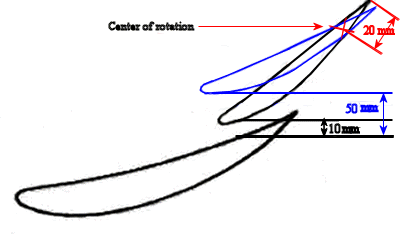
As for the mechanics of moveable wings, the adjustments that can be made are related to the two elements of the rear wing: the main plane and the flap which gap is adjusted in more favorable (downforce wise) way closed for most of the lap, providing the car with the full downforce efficiency. While the main plane remains fixed, the rules allow a driver to press a button on his steering wheel and some kind of actuator will lift the front, leading edge of the flap. The flap will be able to pivot around a point near the trailing edge (20 millimeters of it), away and upward from the main plane up to a maximum distance of 50mm (85mm from 2019 aero rules change) into a more horizontal position, and open up the slot gap (For 2019 there was some minor rules change which involve wings. One of the changes involve DRS. DRS opening is increased by 20mm, boosting its potential power by around 25 percent.). This creates a situation where the two elements of the wing stop acting in harmony and the airflow around the wing separates from the surface of the wing decreasing its effectiveness and improving the straight-line speed of the car. This condition of separated flow is called a “stall” and it is accompanied by a large drop in both downforce and drag on the car. The overall effect on straight-line speed is a bit like an F-duct, but much more powerful. As it is a downforce shedding device, it acts against what most engineers are seeking, which is more downforce. Planed speed advantage with wing deployed will be 10-15 kmh.
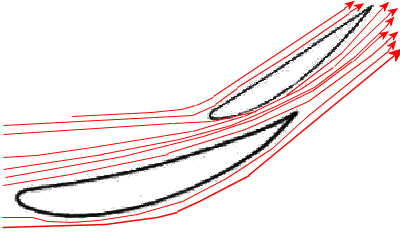 |
Adjustable wing in closed, non-active position, with air streams ideally connected with wing contours and without any turbulences |
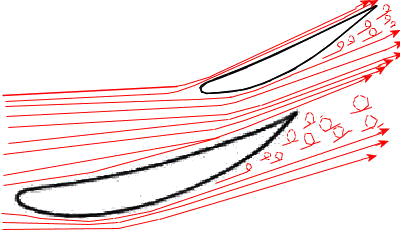 |
Adjustable rear wing in active - deployed position. Stall condition appeared. Airflow around the wing separates from the surface of the wing decreasing its effectiveness, reducing downforce and drag in the same time. |
The wing’s functionality is controlled by a proximity system using electronic loops around the circuit, which allow the system to be armed on each car. It is up to the FIA to decide where those loops should go around a track and they will control its use. FIA is taking the view that they will announce where it can be used as they go along on a race by race basis. The advantage of doing it this way is that they can make adjustments race by race if the concept isn’t working or if it’s far too easy to pass, in other words make the "overtaking zones" longer or shorter depending on how it’s going. They can also adjust the time interval between the cars to make it work better. Once a car crosses the first loop the system is either armed or it is not, depend whether the car is within passing range. The driver is notified by a light in the steering wheel and he will move the wing using a control button on the steering wheel. System can't be activated without the throttle 100 per cent open. The driver can manually return the wing to its normal level or hitting the brakes will achieve the same result. The default setting is for the system to be disabled, but after two laps of the Grand Prix, the system becomes potentially enabled, assuming the cars meet the criteria defined.
That’s mean that drivers can use the system at any time in practice and qualifying (read red area down), but in the race there are restrictions. It cannot be used in the opening two laps, and then will only be made available to the driver at set zones on the circuit if he is less than one second behind the car ahead. These zones are marked out with white lines, and the one-second gap is calculated at the corner before the designated straight, which will see drivers adjusting their rear wing, in a tightly controlled set of circumstances while close racing.
The tweak and amendments to some technical and sporting regulations for year 2013 came on the back of the final 2012 World Motor Sport Council meeting in Istanbul to ratify some detailed changes to the F1 calendar for 2013 and to the sporting and technical regulations. The use of DRS will be restricted during practice and qualifying and drivers will in future only be allowed to use it in the same designated zones where it will be available in the race. There were some concerns over safety at some circuits, as cars were close to being out of control at times. This move will add around half a second on average to qualifying lap times, as the DRS was a powerful tool. The benefit will only be felt on the straights now. During the race, all rules concerning DRS are unchanged. Also, new rules ban on DRS airflow being use to stall the front and rear wings (as explained in my article about Mercedes DDRS), by wording in rules that ban any openings or channels on the rear wing endplate.
It has just two settings, ON and OFF effectively, with the ON setting increasing the gap between the main plane and the flap from 10-15mm to 50mm.
If the system fails, it defaults to the closed, high downforce setting.
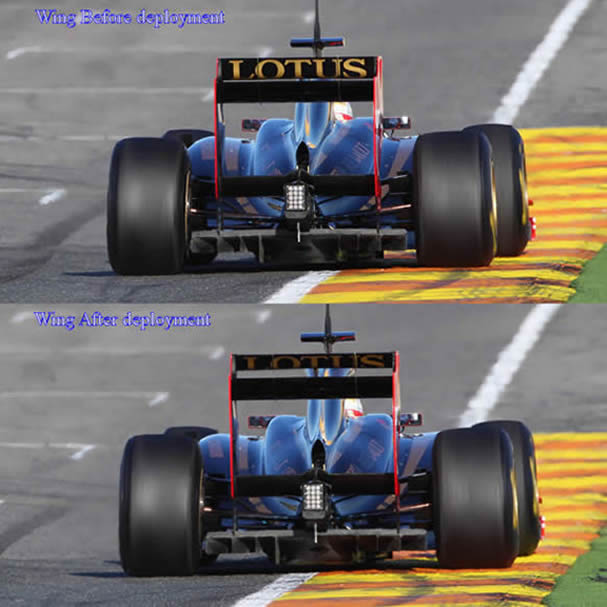
Ferrari technical director Aldo Costa admitted the Formula One Teams Association’s plan for an adjustable rear wing next year was at an early stage and could be dropped if it is deemed unsuccessful. Peter Sauber said the wing was “maybe… a good idea for overtaking, but I think we have different opinions from the technicians.”
Several drivers have voiced doubts over the adjustable rear wing. One of the concerns is that the art of defensive driving will potentially disappear. Of course, if a driver can just sail past an opponent easily, the skill is taken out of overtaking. The overtaken driver can just bide his time until the next straight, where he can use exactly the same method to re-take the position. Cars would change few times a lap, and it would be, quite frankly, ridiculous. To prevent things like that, teams and the FIA have tried to design a system that only gives just enough assistance to a trailing car to make an overtaking maneuver just possible. Nobody wants to have a system that makes overtaking a formality.”
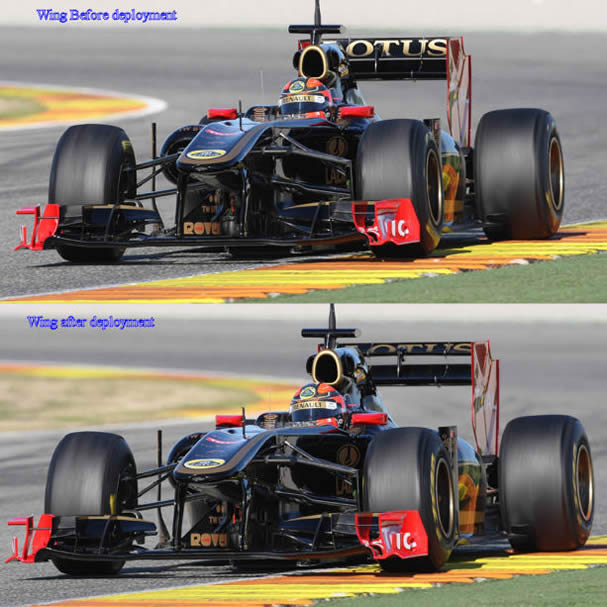
Some drivers voiced concerns what will happened if wing, after deployed in overtake attempt fail and doesn’t return in closed position in front of corner due to malfunction. In braking zone just before corner, last thing you need is car without rear downforce. Technical group wanted to prevent this by placing pivot point high, 20 millimeters from the tip of the trailing edge of the flap. In this way, some kind of actuator will keep wing open, but if actuator is disengaged, aerodynamic forces and load on the wing upper side will close the wing gap and reestablish full downforce. Of course, something can go wrong, but same can happen with any part of the car.
The plan has also been criticized by F1 Fans and reaction has been mostly negative. Many fans feel that the device will be a gimmick, which adds an artificial element to the racing and several drivers articulated similar fears. I would agree, that the way the driver can use the device, as it is planned, it’s a bit artificial, and I personally don’t like it.
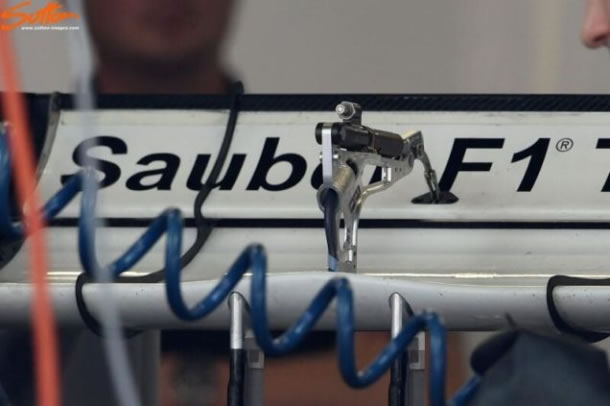
On the other hand, it could make for some interesting strategies, as you see sometimes in NASCAR or Indy cars when they race in the ovals, and to an extend in Moto GP.
You have to choose, when you want to lead the race, as often the guy who leads into the last lap/straight is going to loose it, because he is just providing the slipstream for the guy behind.

There have been many attempts over recent years to improve overtaking in Formula 1 without much success. Will the driver-adjustable rear wings be the silver bullet that solves the problem? If adjustable 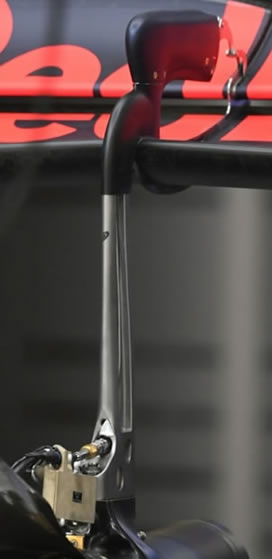 front wings didn’t help overtaking, why will adjustable rear wings make any better? Because it all comes down to the different way that changing the angle of the front and rear wings affects the overall drag of the car. If you change the angle of the front wing, you change the car balance, but the overall drag of the car remains about the same and hence straight-line speed is largely unaffected. However, changing the rear wing angle changes the drag of the car a lot, and therefore the straight-line speed dramatically, in same way F-duct did.
front wings didn’t help overtaking, why will adjustable rear wings make any better? Because it all comes down to the different way that changing the angle of the front and rear wings affects the overall drag of the car. If you change the angle of the front wing, you change the car balance, but the overall drag of the car remains about the same and hence straight-line speed is largely unaffected. However, changing the rear wing angle changes the drag of the car a lot, and therefore the straight-line speed dramatically, in same way F-duct did.
I think it has been and it will be a fascinating area of work and research not just for the actual race and the entertainment it has given with easier overtaking which I think has transformed the nature of Formula 1 races. Technically it is fascinating. It has added a whole new dimension to the process of selecting the best wing for an event. It used to be quite a one dimensional task, run a wing, have a little look at what competitors were doing as well iterate through the weekend to the right wing level. Now you have an extra dimension which is what is your qualifying pace with and without DRS, what's your race pace with the DRS, without it, and even with the complication that if it is raining in qualifying then you cannot use the DRS. Teams might have to factor that in if it's a weekend with potential rain. Lots of complicated sums for the guys to do in the office with the computers to work out what's the best plan.
A bit more about logic of overtaking
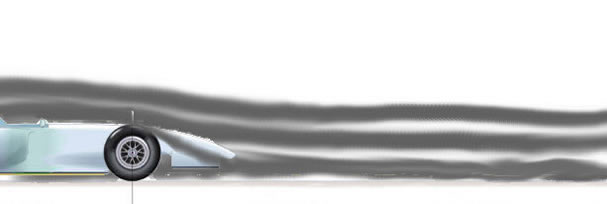
A common complaint of many F1 fans is the perceived lack of overtaking in the sport, especially compared to other forms of racing such as touring cars. The main reason for this deficiency is the advanced aerodynamics of an F1 car (or any so called "downforce car") in that, when one car closely follows another, it has to re-use the air of the car in front. For good overall grip you need good aerodynamic grip and mechanical grip. This so-called dirty air has already been displaced and manipulated by the leading car and, when receiving it ‘second-hand’, the car following cannot take full advantage of it. As a result, the car behind experiences decreased aerodynamic grip when cornering, and struggles to keep close enough to its rival to mount a successful challenge for the position. He needs to relay almost entirely on car mechanical grip, and that’s not enough. Where overtaking does take place, it is usually when one driver has a straight-line speed advantage over the car in front and using slip-streaming in same moment, where the driver behind eliminates some of the drag on the front of his car by closely following another. With less drag, the chasing driver can build up speed behind his rival and then, when he pulls out alongside, although both drivers are now subjected to the same amount of drag force, the slip-streamer has more momentum, and can power past his rival. At tracks with long straights, such as Malaysia, China and Monza, those drivers with most powerful engines found it reasonably easy to get past their rivals. With more horsepower available to them and, with extra help from a slip-stream, they would have their nose ahead at the end of the straight, and could take the position into the corner. This is why KERS, introduced in 2009, helped with overtaking.
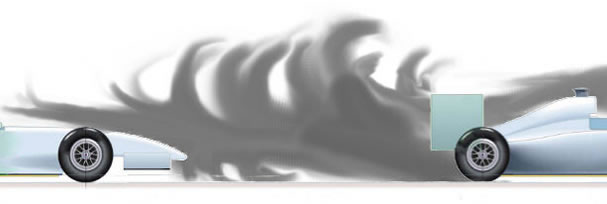
Another thing is a frequent, but not all known problem in modern Formula 1. A driver gets close enough to the car in front to slipstream him down the straight, but just before he’s built enough speed to pass, he hears the sound of a V8 engine bouncing off its rev limiter at 18,000 rpm.
It’s one of the main reasons overtaking in Formula 1 is such a rarity. To squeeze every last tenth out of the car, technicians pick gear ratios so that cars hit the rev limit in top gear at the fastest point on the track, normally close to the end of longest straight, few hundred meters before braking point. The result is that, while slipstreaming reduces a car’s drag and increasing its top speed to allow overtaking, in practice the cars’ speeds are limited by gear ratios chosen for different circumstances. If longer gear ratios were used, giving the cars enough headroom to slipstream, it would impair their performance in clean air.
The FIA’s latest solution to the overtaking issue is to introduce an adjustable rear wing, capable of shedding drag while in the tow of another car to make passing easier. Already, there are some concern that, because a car’s top speed is decided when its gear ratios are chosen, the loss of drag from the adjustable rear wing will have a negligible impact on overtaking.
A closer look at how the FIA have chosen to implement the adjustable wing reveals this doesn’t need to be a problem. They can change deployment zone in race to race basis, and learn in progress. Concerns over how the rear wing will impact on gear ratios seem to stem from the assumption that the FIA will choose the straight where the cars reach their highest speeds as the deployment zone.
The FIA has an inglorious history of shooting itself in the foot, but choosing the longest straights for the rear wing deployment would be stupid even by its standards. Consider this: at a particular circuit, cars reach their top speed of 300kph at the end of straight A. With the rear wing activated, the theoretical drag-limited top speed rises to 315kph, but because of the gear ratios picked before the race, the car starts bouncing off the limiter at 300kph.
At straight B on the same circuit, the cars reach 280kph before they hit the brakes. If the rear wing were activated on straight B, the cars would now reach 295kph at the end of the straight. More than enough to pass cars with the wing activated, without threatening the rev limiter. If the FIA wishes to avoid a headache for teams, and a potential embarrassment for itself, it will place the deployment zone away from the fastest point on the track, be that on the second-longest straight or otherwise. Of course, these concerns could well turn out to be academic, as unrestricted use of the wing in qualifying means teams may well choose gear ratios which allow them to hit top speed with the rear-wing activated on the longest straight (315kph, to use the example above). But if teams compromise their Saturday performance by choosing shorter gear ratios, it could pay dividends on race day, when activation of the rear-wing is restricted.
There is one more thing to consider. DRS will not work with same efficiency on every circuit. On circuits with high or medium download setup DRS will be more effective than on low or ultra low download circuits. In Monza for example the cars run very little wing anyway. So when you flatten the upper wing element it actually makes very little difference, because there's hardly any wing back there anyway, and DRS will be of limited help to overtake.
Data issued by MercedesAMG GP on the end of 2011 season
With DRS Formula One has made an effort to increase the possibility for overtaking.
Overtaking - how much, not enough, or too much of the artificial sort - a frequent topic throughout the 2011 season, since the advent of DRS (the Drag Reduction System) and Pirelli tires.
But overall levels of overtaking have risen to record levels - there have been nearly 1500 passes during 2011 season. The figures used below are calculated for strategic purposes by Mercedes team, which are reflected in the categorization, and compiled from a combination of video, timing data and GPS technology. Here I will not use data for overtaking trough pit stops, first lap or lapping slowest cars or passing damaged cars. Only clean racings (battle between two or more cars) are counted.
- The combined total of 'Normal' and 'DRS-assisted' moves - the indicator of what most observers consider to be 'clean' overtaking - is 804 overtakes. This gives an average of 45 normal and DRS overtakes per race.
- From the total of 804 clean overtakes, there have been 441 normal overtakes and 363 DRS overtakes; 55% were normal and 45% were DRS.
- The highest number of clean overtakes were recorded in Turkey (85), Canada (79) and China (67). The races with the fewest were Monaco (16), Australia (17) and India (18). Nine races featured fewer than 50 clean overtakes; eight races featured more than 50. There have been an average of 45 clean overtakes per race - broken down to 25 normal overtakes and 20 with DRS.
- The highest ratio of DRS overtakes to normal, i.e. where the influence of DRS was greatest, were: Abu Dhabi (89%), Europe (81%), India (78%), Turkey (59%) and Spain (57%). The lowest ratio of DRS overtakes to normal were: Monaco (13%), Hungary (20%), Canada (22%), Japan (26%) and Great Britain (27%) - it should be noted that three of these five races featured wet or mixed conditions, and use of DRS was restricted for portions of the race in Canada and Great Britain. DRS overtakes have outnumbered normal moves in eight of 18 races.
- In the first nine races of the season, there were on average 21 DRS overtakes per race - on average, 45% of clean overtakes. The influence of DRS has remained stable in the second nine races of the year: there were on average 20 DRS overtakes per race, representing on average 46% of clean overtakes.
- The most overtaking in the races after lap one list is headed by Perez and Buemi, both with 82 overtakes. They are followed by Button (77), Webber (76), Alguersuari (74) and Michael Schumacher (71). It should be noted that use of DRS is allowed after second lap.
Of this year's overtaking maneuvers, a lot have been assisted by DRS, but it has also set up opportunities to pass later in the lap. I think DRS on its own is good but personally I feel that having KERS and new Pirelli tires are really helped this year. I think they can really use it to their advantage, to overtake and obviously to try and block and defend a position. That’s meant that KERS was as important as DRS. There are some instances when perhaps it made overtaking too easy, but there are always negatives and positives with something new like this. Positives outweigh the negatives. DRS and KERS has brought a lot to racing, and you can get closer to the cars ahead and prepare your next move. System has worked very well and it will get even better next year now the FIA knows how it works.
Double DRS will be banned for 2013, after Formula 1 teams agreed to a change of rules that will outlaw the concept for next year.
Mercedes led the way at the start of this season with a radical design that feeds air via a hole in the rear wing endplate, all the way through the car and out the front wing - which is then stalled when DRS is activated. This helps provide a straight line speed boost.
Following discussions at F1 rules think-tank, the Technical Working Group, sources have revealed that a majority of teams agreed for a change in regulations that will ensure they cannot incorporate double DRS into their cars for 2013.
Although Mercedes did not support the change in rules, because it had made such a headstart in the area, it could not stop the ban going through as it only needed a majority of teams to agree.
It is understood the changes to the rules will be made official by the FIA's World Motor Sport Council later this year.






